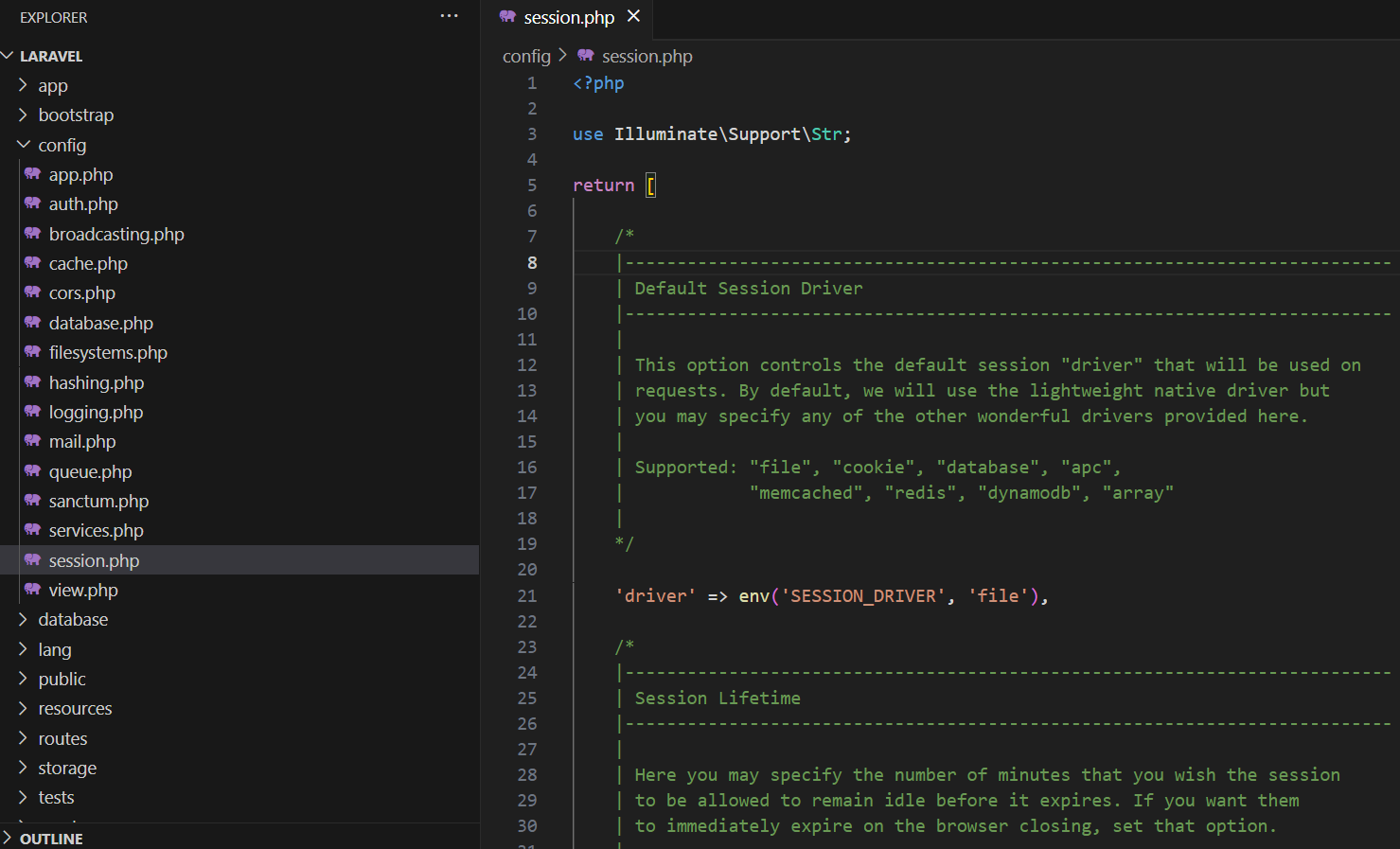In Laravel, the session handling mechanism is quite robust and provides a convenient way to store information across multiple requests. Sessions can be used to store user data, flash messages, and other information that needs to persist between requests. Here's a guide on working with sessions in Laravel:
1. Configuration:
Ensure that session configuration is set up correctly in the config/session.php file. The default configuration should work for most applications.
2. Starting a Session:
Sessions are started automatically by Laravel, but you can manually start a session using the session helper or the Session facade:
session_start(); // using the session helper // or use Illuminate\Support\Facades\Session; Session::start(); // using the Session facade
3. Storing Data in the Session:
You can store data in the session using the put method or the session helper:
// using the session helper
session(['key' => 'value']);
// using the Session facade
Session::put('key', 'value');
4. Retrieving Data from the Session:
To retrieve data from the session, you can use the get method or the session helper:
// using the session helper
$value = session('key', 'default');
// using the Session facade
$value = Session::get('key', 'default');
5. Removing Data from the Session:
You can remove data from the session using the forget method or the session helper:
// using the session helper
session()->forget('key');
// using the Session facade
Session::forget('key');
6. Flashing Data:
Flash data is only stored in the session for the next request and then is automatically forgotten. This is useful for temporary messages like success messages after a form submission:
// using the session helper
session()->flash('key', 'value');
// using the Session facade
Session::flash('key', 'value');
7. Retrieving All Data:
To retrieve all data from the session, you can use the all method:
// using the session helper $data = session()->all(); // using the Session facade $data = Session::all();
8. Checking if a Key Exists:
You can check if a key exists in the session using the has method:
// using the session helper
if (session()->has('key')) {
// Key exists
}
// using the Session facade
if (Session::has('key')) {
// Key exists
}
9. Regenerating the Session ID:
To regenerate the session ID and prevent session fixation attacks, you can use the regenerate method:
// using the session helper session()->regenerate(); // using the Session facade Session::regenerate();
10. Deleting the Session:
To delete the entire session data, you can use the flush method:
// using the session helper session()->flush(); // using the Session facade Session::flush();


Comments